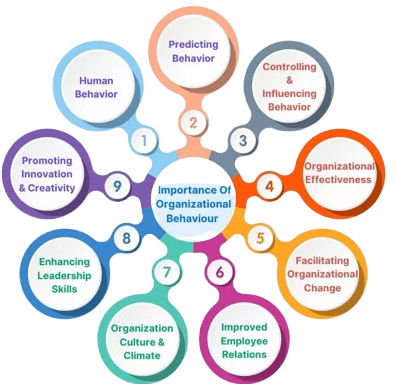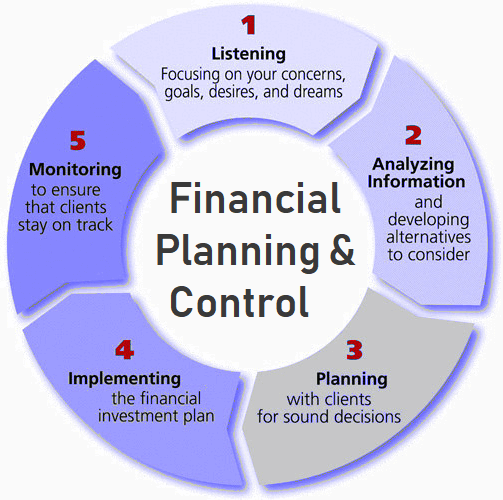
- What is a Management Control System?
- Importance in Organizations
- Types of Management Control Systems
- Elements of a Control System
- Financial and Non-Financial Controls
- Tools and Techniques
- Performance Measurement Systems
- Strategic Control
What is a Management Control System?
A management control system is a critical framework used by organizations to ensure that their strategies and objectives are effectively implemented and achieved. It involves a set of procedures, tools, and processes that help monitor performance, allocate resources efficiently, and guide employee behavior toward the organization’s goals. By integrating financial and non-financial measures, such systems provide comprehensive insights into operational performance and strategic alignment. When asking what a management control system is, it’s important to understand that it not only supports decision-making but also enhances accountability at all levels of the organization. These systems typically include budgeting, performance measurement, internal controls, and feedback mechanisms, all designed to keep the organization on track. Whether in a manufacturing firm or a service-based enterprise, implementing a robust control system can improve coordination, reduce inefficiencies, and adapt to changes in the business environment. Leaders often rely on these systems to evaluate progress and make timely adjustments to strategies. In summary, what a management control system is can be answered by viewing it as a comprehensive tool that drives performance, supports strategic goals, and ensures that every part of the organization works cohesively toward shared objectives.
Importance in Organizations
- Improved Decision-Making: Management systems provide accurate and timely data, enabling leaders to make informed decisions that align with strategic goals.
- Enhanced inventory management: Organizations can optimize stock levels, reduce holding costs, and prevent stockouts by integrating strong inventory management practices into their overall control system.
- Increased Efficiency and Productivity: Streamlined processes and performance tracking help eliminate waste and ensure that employees focus on value-added tasks.
Effective management systems are essential for ensuring that organizations operate smoothly, meet their objectives, and remain competitive in dynamic markets. These systems support better decision-making, enhance resource utilization, and foster accountability across all levels. Below are six key points highlighting their importance in organizations:

- Better Financial Control: Budgeting, cost control, and financial reporting ensure that resources are used wisely and financial risks are minimized.
- Stronger Accountability and Transparency: Clearly defined roles and performance metrics promote responsibility and make it easier to track individual and team contributions.
- Support for Inventory Management Systems: A well-structured control framework supports advanced inventory management systems, ensuring materials and products flow efficiently through the supply chain.
Types of Management Control Systems
Management Control Systems are essential tools that help organizations align operations with strategic objectives. These systems can be broadly categorized into several types, each serving a unique purpose within the organizational framework. The most common types include budgetary control systems, which focus on financial planning and expenditure monitoring; financial control systems, which ensure profitability and cost-efficiency; and operational control systems, which monitor day-to-day activities to maintain productivity and quality. Another key type is strategic control systems, which evaluate long-term performance and the effectiveness of strategic plans. Behavioral control systems are also important, as they influence employee actions through policies, rewards, and performance evaluations. By using various Management Control Systems, organizations can maintain a balance between flexibility and control, enabling them to adapt to changes while staying focused on their goals. Each system provides a different lens through which performance is measured and guided, allowing managers to make informed decisions and take corrective actions when necessary. Overall, the integration of these diverse types of Management Control Systems creates a comprehensive approach to governance, performance improvement, and strategic alignment across all departments of an organization.
Elements of a Control System
- Set Standards: Standards are the benchmarks or targets against which actual performance is measured. These can be financial, operational, or behavioral.
- Measure Performance: This involves collecting data on actual performance through reports, observations, or automated systems.
- Compare Performance with Standards: The measured results are compared to the predefined standards to identify any variances or deviations.
- Analyze Deviations: When differences are found, it’s important to understand why they occurred. This analysis helps in identifying root causes and potential risks.
- Take Corrective Actions: Based on the analysis, corrective steps are taken to fix issues and realign performance with the expected goals.
- Feedback Mechanism: A strong feedback loop ensures that lessons learned are integrated into future planning and control processes, improving the system continuously.
- Budgeting: Budgeting is a foundational tool for planning and controlling financial resources, helping organizations set spending limits and track performance against financial goals.
- Balanced Scorecard: This technique provides a comprehensive view by measuring performance across financial, customer, internal process, and learning perspectives.
- Key Performance Indicators (KPIs): KPIs are specific metrics that help track progress toward strategic objectives, such as sales growth, customer satisfaction, or inventory management efficiency.
- Standard Costing: Standard costing helps control costs by comparing actual expenses with predetermined standard costs, highlighting areas that need corrective action.
- Variance Analysis: This involves identifying and analyzing the differences between planned and actual outcomes to support informed decision-making.
- Inventory Management Software: Advanced inventory management tools track stock levels in real-time, reduce waste, and improve order accuracy, enhancing overall operational control.
A control system is designed to guide an organization’s activities toward achieving its goals efficiently and effectively. It ensures that actual performance aligns with planned objectives by constantly monitoring, comparing, and correcting actions. Below are six essential elements of a control system:
Financial and Non-Financial Controls
Financial and Non-Financial Controls are essential components of a comprehensive management control system, helping organizations track performance, ensure accountability, and drive strategic success. Financial controls focus on monetary aspects such as budgeting, cost management, financial reporting, and return on investment. These controls ensure that resources are allocated efficiently and help detect and prevent financial mismanagement. Examples include variance analysis, profit margins, and balance sheet reviews. On the other hand, non-financial controls address qualitative factors like employee performance, customer satisfaction, product quality, and process efficiency. These controls are vital for understanding areas that financial data alone may not fully capture. Metrics such as customer retention rates, employee engagement scores, and production cycle time fall under non-financial controls. Together, Financial and Non-Financial Controls provide a balanced view of organizational performance. While financial controls ensure fiscal discipline and profitability, non-financial controls help assess long-term sustainability and operational health. By integrating both types, companies can make better decisions, adapt more quickly to changes, and align daily activities with strategic goals. Effective use of Financial and Non-Financial Controls enables management to maintain control over diverse areas of the business while fostering continuous improvement and growth.

Tools and Techniques
Organizations use a variety of tools and techniques to monitor performance, guide decision-making, and ensure strategic alignment. These tools are essential for improving efficiency, maintaining control, and adapting to changing business environments. Below are six commonly used tools and techniques that support effective management control systems, including those related to inventory management:
Performance Measurement Systems
Performance Measurement Systems are essential for evaluating how well an organization is achieving its strategic and operational goals. These systems involve the use of metrics and indicators to assess efficiency, effectiveness, and overall success across various functions. By tracking both financial and non-financial data, organizations can gain a clear understanding of their current performance and areas that require improvement. One widely used tool in performance measurement is the balanced scorecard, which provides a structured framework for evaluating performance across four key perspectives: financial, customer, internal business processes, and learning and growth. This approach ensures that organizations do not focus solely on financial results but also consider long-term capabilities and customer satisfaction. Performance Measurement Systems help managers make informed decisions, align employee efforts with organizational objectives, and promote continuous improvement. These systems can include KPIs, benchmarks, dashboards, and real-time data analytics, all designed to support goal-setting and accountability. By implementing a comprehensive Performance Measurement System, including tools like the balanced scorecard, organizations can monitor progress effectively, motivate teams, and respond swiftly to changing market conditions. Ultimately, a strong measurement system is a critical component of strategic management and organizational success.
Strategic Control
Strategic Control is a crucial process that helps organizations monitor and adjust their long-term strategies to ensure they align with their goals and objectives. Unlike operational control, which focuses on short-term activities and tasks, Strategic Control focuses on the broader direction of the company, ensuring that the chosen strategy remains relevant and effective in a dynamic environment. This type of control involves regularly assessing performance against strategic goals, tracking key performance indicators (KPIs), and identifying any deviations from the plan. By doing so, organizations can make timely adjustments to their strategies, ensuring they remain competitive and responsive to changes in the market, technology, or customer preferences. Tools like SWOT analysis, strategic audits, and competitive benchmarking are commonly used in Strategic Control to evaluate internal strengths and weaknesses and to identify external opportunities and threats. Furthermore, this process enables managers to allocate resources effectively, ensuring they are directed toward the most impactful initiatives. Effective strategic control provides organizations with the flexibility to adapt their strategies as needed while keeping their long-term vision intact. Ultimately, Strategic Control ensures that companies stay on track to achieve sustainable growth and maintain a competitive edge in the market.

